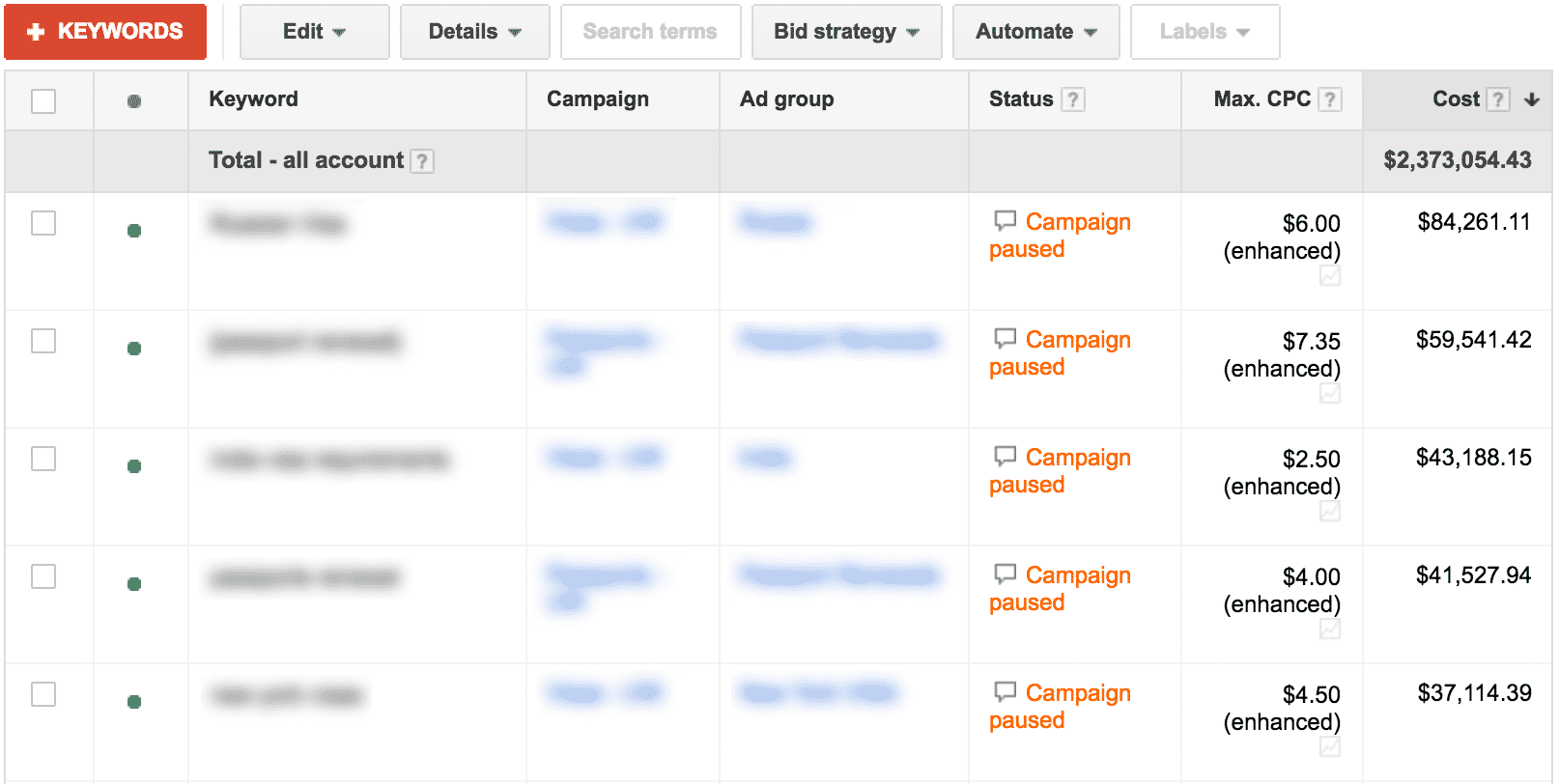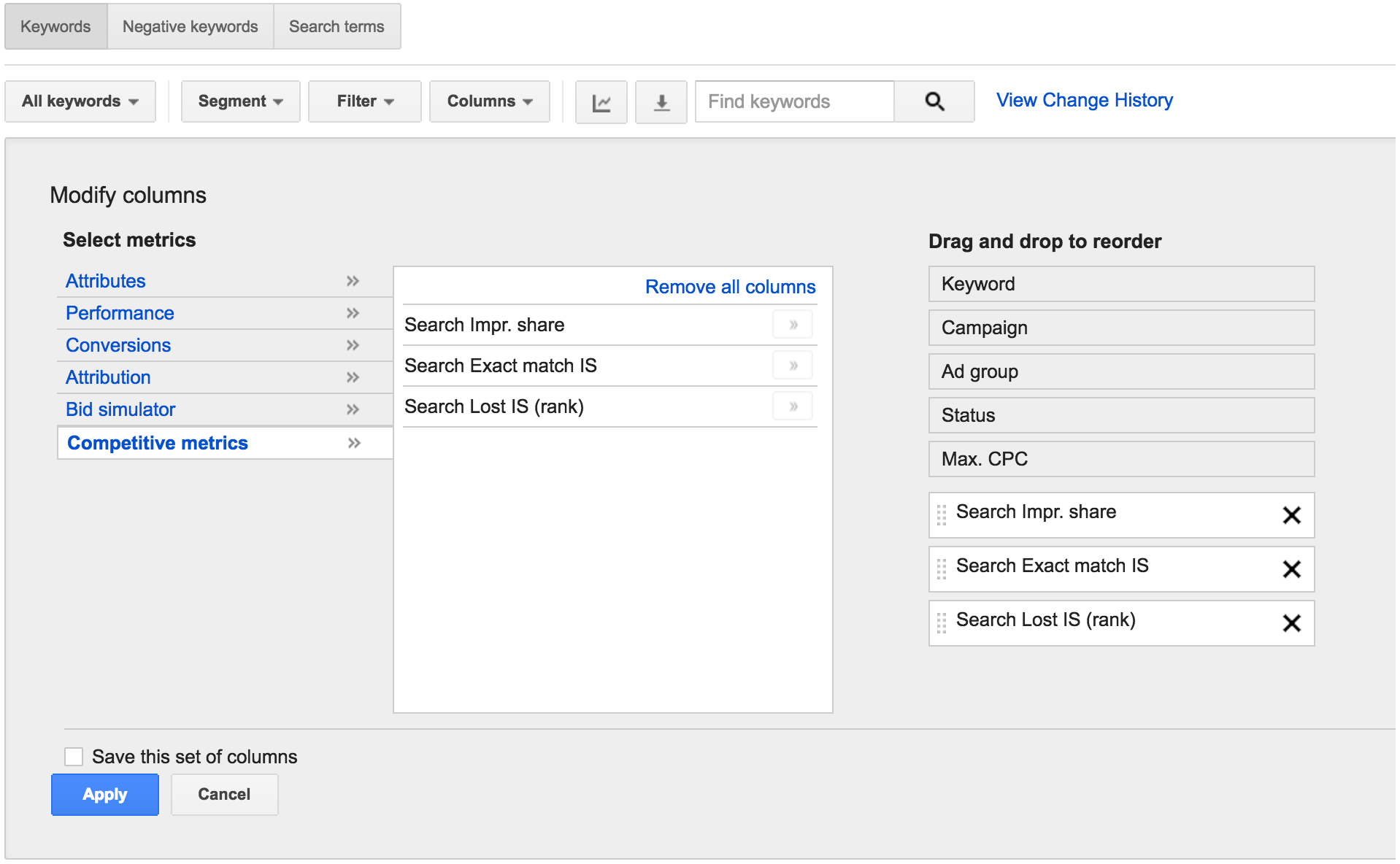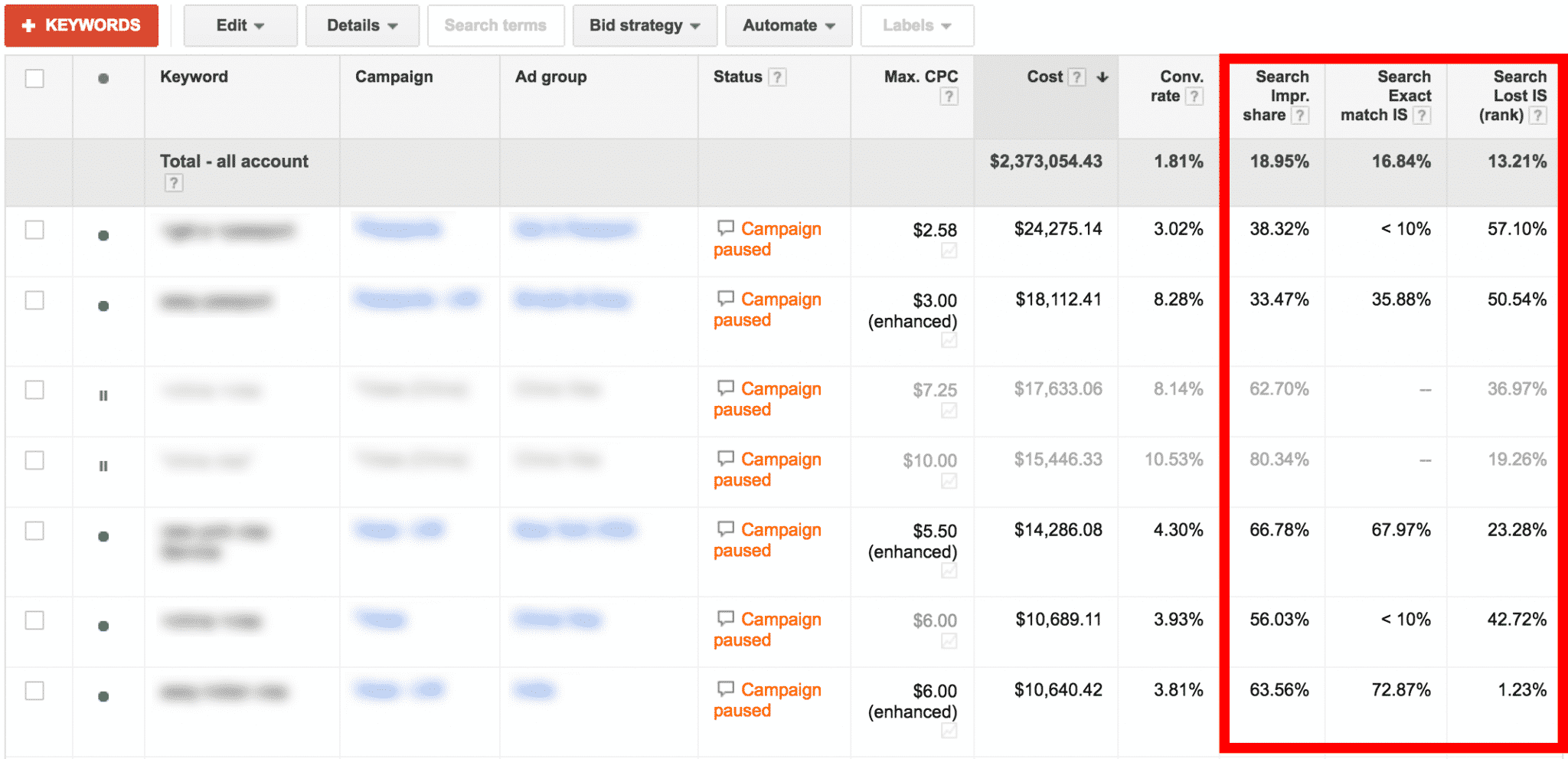Are You Maximizing Impression Share on the Right Keywords?
by Jacob Baadsgaard • July 20, 2016
At Disruptive Advertising, we’ve audited a lot of paid search accounts. Some accounts are working great, but many accounts struggle to produce results because their best keywords simply aren’t getting enough impression share.
In paid search advertising, impression share is a measurement of how often your ads are showing up when someone types in a relevant search query.
So, if your ad is in position 1.0 for every relevant search and you have an infinite budget, your ad would have a 100% impression share.
Unfortunately, that’s rarely the case.
There are a lot of reasons why your ads don’t show up when they should be showing up, but most of them stem from budget limitations.
If your best keywords and ads have enough budget, they’ll show up. If funds are tight, your ads might be MIA.
To get the most out of your paid search advertising, you need to know which ads are your top performers and make sure that they’re getting every possible impression.
Identifying Your Top Performing Keywords
To figure out which keywords you should be maximizing impression share on, you need to figure out which keywords are producing the most conversions.
Are You Tracking Conversions Properly?
It should go without saying, but if you want to know which keywords deserve the most impressions, you need to be tracking conversions.
After all, if you don’t know which keywords are converting, how do you know which keywords are actually doing their job?
Many advertisers think they are tracking conversions, but conversions aren’t just limited to form completions. You need to track calls, purchases, chats, email signups…everything that matters to your business.
When you take all of your conversion actions into account, you may find that your conversion tracking isn’t as accurate as you thought. In fact, just 29% of paid search advertisers are actually tracking everything.
So, before you go any further, make a quick list of what you want people to do after they click on your ad. Then, make sure that you have a good system in place for tracking all of those actions.
Once you’ve got great conversion tracking in place and 2-3 months of data, you’re ready to move on to identifying your top keywords!
Getting at the Right Data
To get a feel for which keywords really drive results, we need to take a look at the Keywords report (shocker, right?).
Open your paid search account, set your date range for the past 3-6 months and click on the “Keywords” tab.
Next, click the Filter drop-down menu and then “Create filter” for “Conv. rate < 2%”. Here’s what that looks like:
Once you hit Apply, you’ll end up with a filtered list like this:

Even looking at just this screenshot, it’s clear that this account has a problem. Just 5 of their poorly-converting keywords account for 11% of their ad spend!
Looking at Impression Share
Now that you have an idea of how much money you are wasting on the wrong keywords, we need to see if that wasted budget is hurting your high-performing keywords.
To see that, lets change our filter to “Conv. rate > 2%” (so we can look at our winners, not our losers).
Next, click on Columns > Modify columns and make sure that “Search Impr. share”, “Search Exact match IS” and “Search Lost IS” are selected:

Your list should end up looking like this:

Here, we can see how all that wasted ad spend is sucking budget away from this client’s top keywords.
For example, one of these keywords has a conversion rate of 8.28%. However, this keyword is only getting one-third of the available impressions—even when someone types in that exact keyword.
The question is, why?
Search Lost IS (rank)
Looking at the Search Lost IS (rank) column, this client is losing 50.54% of their potential impressions on this high-performing keyword because their ads aren’t ranking high enough.
That means their bids are too low!
Since this keyword has one of their highest conversion rates, this is a major problem. This client is spending huge chunks of their budget on keywords that don’t convert very well, but they aren’t bidding high enough to get their best keywords seen.
In this case, upping the bids on this keyword seems like a fairly easy and obvious fix.
The one thing to take into account here is the fact that upping your bids will increase your cost-per-click (CPC), which will increase your cost-per-conversion, which will increase your cost-per-sale.
For a clear winner like this keyword, that shouldn’t be a problem, but if a keyword is barely profitable at your current CPC, increasing your CPC just to improve your impression share probably isn’t a good idea.
Of course, if your best keywords are barely profitable, you have bigger problems than just low impression share…
Search Lost IS (budget)
Here’s where things get really interesting. It takes a bit of extra effort to figure out whether or not keywords are losing impressions to budget limitations, but it’s worth it.
Since we can’t see Search Lost IS (budget) in the Keywords report, we’re going to have to look at it in the Campaigns report. Note which campaign(s) your high-performing keywords are in, go to the Campaigns tab and click on the appropriate campaign(s).
Now, add Search Lost IS (budget) as a column. This will allow you to see what percentage of your potential impressions this campaign is losing due to budget limitations.
For example, this client’s keyword with an 8.28% conversion rate was part of a campaign that was losing 77% of its impression share to budget limitations.
If the keyword is only getting 33% of the potential impressions and the campaign is only getting 23% of the potential impressions due to a lack of budget, you can bet that this keyword isn’t getting the impressions it deserves because of budget limitations.
So, this client has a high-performing keyword that is missing out on 2/3rds of its potential impressions due to bid and budget constraints…and a huge portion of this account’s budget is being spent on poor-performing keywords.
Do you see an opportunity here? I do.
Fixing Things
On a great keyword like this, you should shoot for 90% or better impression share—even if that means cutting budget from some of your lousy keywords.
After all, if the keyword is working well, shouldn’t you give it every possible chance to deliver?
Well, just in case you’re still wondering whether or not this technique actually helps your business, let me show you what happened to this client when we stopped bidding on their useless keywords and focused their budget on what was working.

The next day, the client’s ads were showing up for the right searches twice as often. Sales increased by over 50% within a month.
After 9 months, sales had more than tripled.
Best of all, the client’s account was performing so well that they actually ended up spending less on AdWords.
And, all we did was give their high-performing keywords the impression share they deserved.
Maximize Your Impression Share
Impression share is an easy metric to ignore, but it can be one of the quickest ways to improve paid search account performance.
The key is to remember that every click comes at a cost—if you’re paying for one click, there’s another that you can’t pay for.
So, if you’re spending most of your budget on keywords that don’t convert well, you’re not paying for clicks from keywords that produce good results for your business.
But, with a little bit of work, you can easily identify which keywords should actually be getting your budget…and which keywords are sucking your budget dry.
By the way, if you’d like me to take a look at your paid search keywords and help you identify impression share opportunities, let me know here or in the comments. I’d love to help!
How do you feel about paid search impression share? Is it an important metric to you? Do you agree with the approach in this article?






